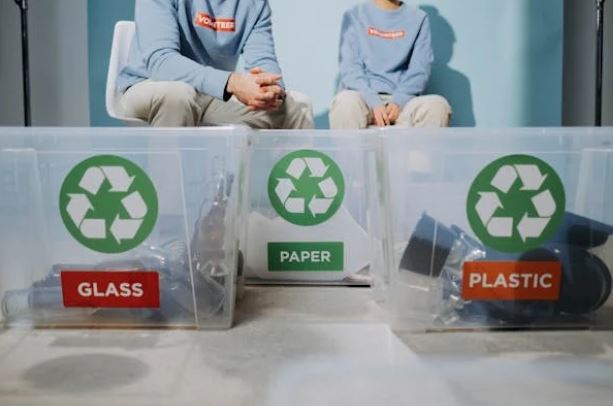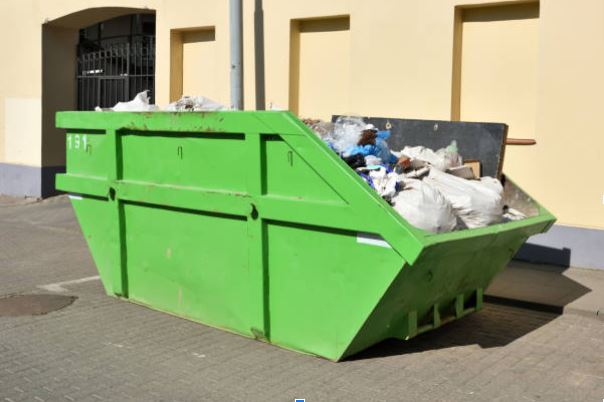Skip bins are essential containers used in waste disposal, facilitating the efficient collection and transportation of various types of refuse. Understanding the most popular skip bin size can help consumers select the right bin for their needs, whether for home renovations, garden clean-ups, or construction sites. Their strategic placement aids in maintaining cleanliness, promoting recycling efforts, and simplifying waste management for residential and commercial projects.

Skip Bin Sizes
Skip bin size refers to the dimension and capacity of containers used for waste disposal. These bins come in various sizes, accommodating different volumes of materials helping individuals and businesses choose the right one based on their specific rubbish removal needs.
Also Read: Expert Air Conditioning Repair Services in Dandenong – Stay Cool & Comfortable
Different sizes of skip bins and their capacities
Skip bins come in various sizes, each designed for specific waste disposal needs. Typically ranging from 2 to 8 cubic meters, smaller bins suit home renovations or clean-ups, while more extensive options accommodate significant projects like construction or large-scale landscaping jobs.
The difference between mini skips, medium skips, and large skips
Mini skips are ideal for small cleanups, holding up to 2 cubic yards. Medium skips accommodate larger projects with a capacity of 6 cubic yards, while large skips suit extensive renovations or construction tasks, offering space for up to 12 cubic yards.
Determining the Right Skip Bin Size
Different waste management needs involve a variety of strategies designed to tackle specific waste types, including organic, recyclable, and hazardous materials. To implement effective solutions, it’s essential to consider local regulations, environmental impacts, community behaviours, and technological innovations to promote sustainability and reduce reliance on landfills.
Also Read: Why Gold Coast Landlords Need Property Management
Estimating waste volume correctly
Accurate estimation of waste volume is essential for effective waste management. It facilitates proper resource allocation, minimises landfill overflow, promotes recycling efforts, and enhances environmental sustainability while ensuring compliance with regulations—ultimately leading to cost savings and improved public health outcomes.
Consideration of the type and weight of waste
Evaluating the kind and quantity of waste is essential for effective management. Understanding both aspects helps determine appropriate disposal methods, minimise environmental impact, and ensure compliance with regulations. This process aids in fostering sustainable practices within communities and industries.
Frequency of waste collection and removal
Waste collection and removal occur at specified intervals, ensuring communities maintain cleanliness and hygiene. Efficient waste management through regular services offered by local authorities is crucial for preventing the buildup of refuse, reducing environmental impact, and promoting public health.
Compliance with local regulations regarding waste disposal
Adhering to local waste disposal regulations is crucial for environmental protection and community health. Proper compliance ensures that hazardous materials are managed safely, minimises the risk of pollution, and supports sustainable practices that contribute to cleaner neighbourhoods and ecosystems.
Most Popular Skip Bin Sizes for Various Situations
The preferred skip bin size for home use typically caters to residential waste, providing an efficient disposal solution. Homeowners commonly favour 2—to 3-cubic-meter bins for their manageable size and versatility for various projects.
Assessing the various skip bin sizes available for commercial waste disposal is essential. Different businesses generate distinct amounts of waste, making selecting an appropriately sized skip bin crucial. This evaluation helps optimise efficiency and cost-effectiveness in waste management solutions.
Appropriate skip bin sizes for industrial waste
Selecting the right skip bin size is crucial for effectively managing industrial waste. Various factors, including waste type and volume, play a significant role. An appropriate size ensures efficient disposal, minimises costs, and promotes environmental sustainability by optimising collection processes.
When planning for construction waste disposal, it’s essential to consider various skip bin sizes. Commonly used options include two cubic meters for small projects, 6 and 8 cubic meters for mid-sized jobs, and larger bins like ten or more for extensive renovations.
Tips to Choose the Right Skip Bin Size for Your Waste Management Needs
Advice on comparing skip bin sizes
When comparing skip bin sizes, evaluate your project’s waste volume and type. Consider container dimensions like length, width, and depth, ensuring you choose one that accommodates your needs without overfilling. Always consult with the provider for expert recommendations tailored to your requirements.
Also Read: Streamline Your Rental Business with Expert Property Management in Brisbane
Consulting with waste management professionals
Consulting waste management experts is crucial for effective disposal and recycling practices. Their specialised knowledge ensures compliance with regulations, optimises resource efficiency, minimises environmental impact, and promotes sustainable solutions tailored to specific needs. Expertise fosters responsible waste handling within communities and organisations.
The Environmental Impact of Choosing the Right Skip Bin Size

How incorrect skip bin size could lead to environmental hazards
Using an inappropriate skip bin size can result in overflows or improper waste disposal, which may contaminate soil and water sources. This mismanagement poses environmental threats, as hazardous materials might leak out or attract pests, exacerbating pollution and ecological damage.
Choosing the appropriate bin size significantly improves waste management practices and enhances environmental sustainability. Properly sized bins facilitate efficient sorting, reduce overflow, minimise contamination, and promote recycling efforts, ultimately reducing landfill waste and a smaller ecological footprint for communities.
Also Read: Enhancing Trading Software Reliability: Outsourcing QA Testing In Australia





























